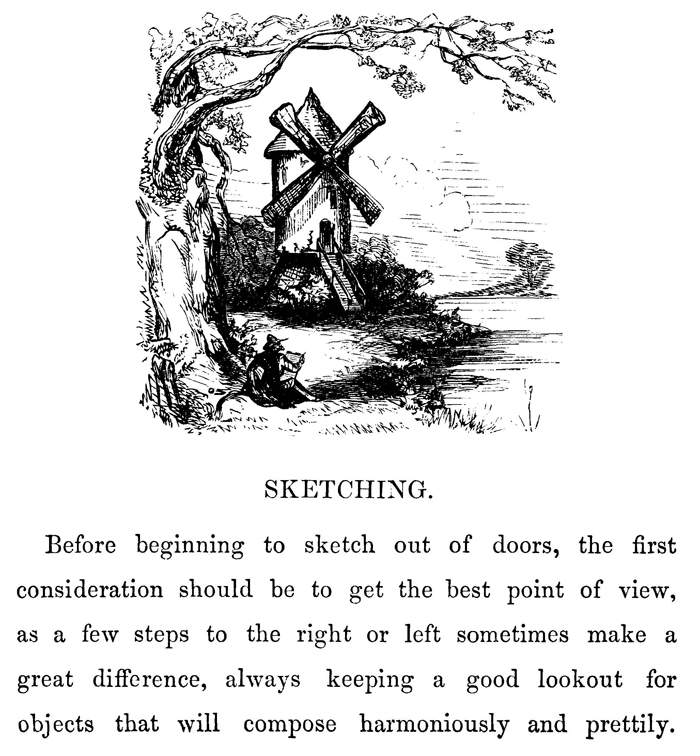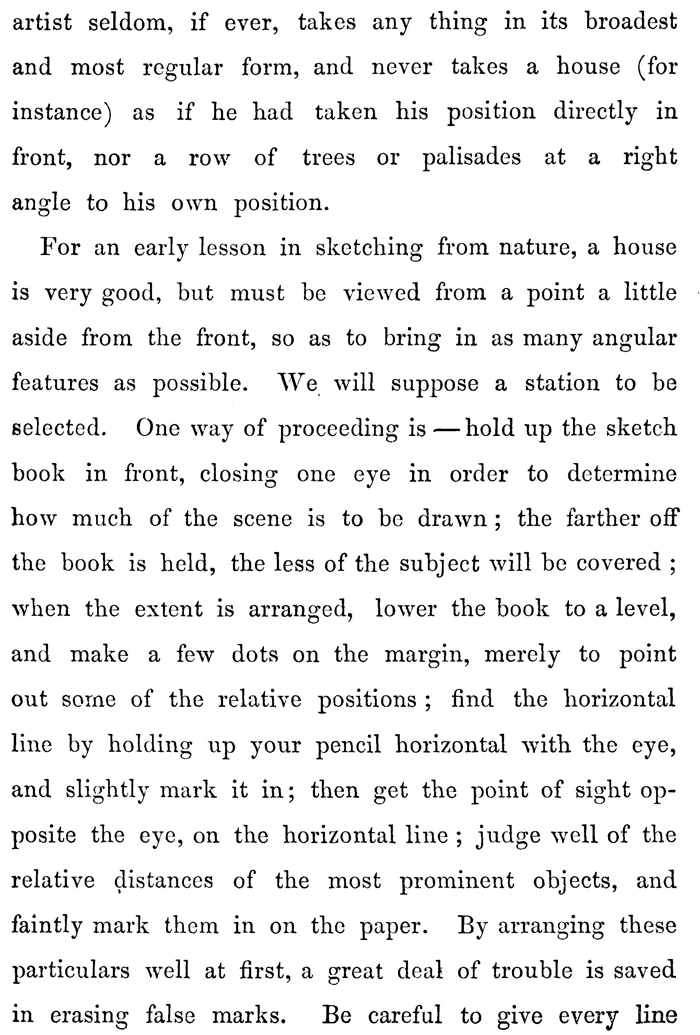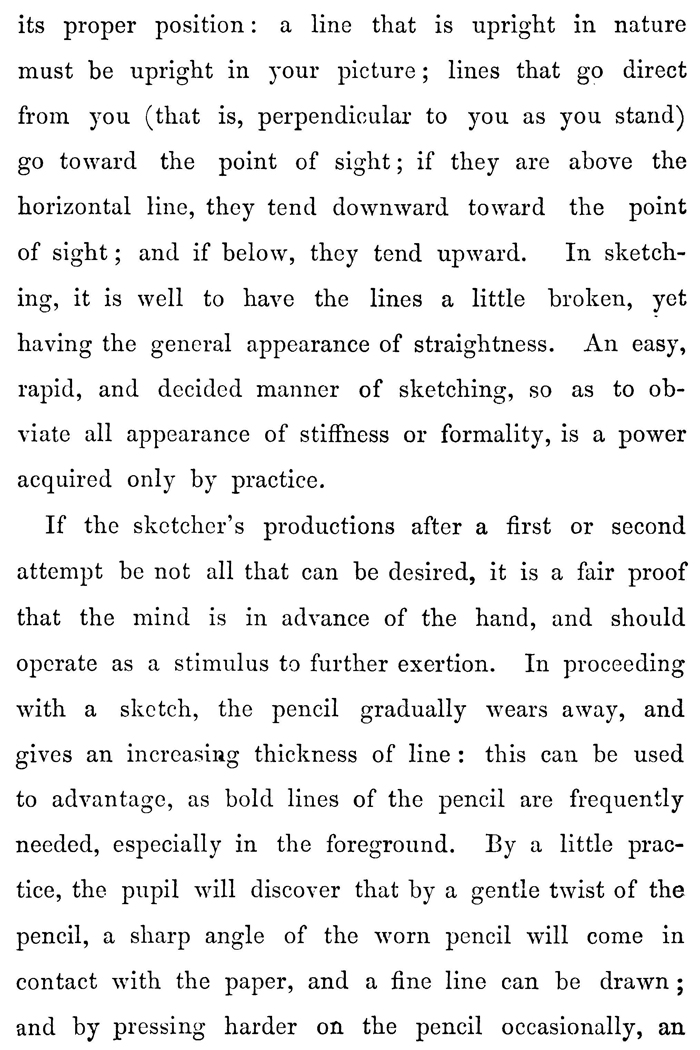Home > Directory of Drawing Lessons> Nature Drawing > Sketching Outdoors > Tips for Sketching Outdoors
THINGS TO CONSIDER BEFORE SKETCHING OUTDOORS : How to Sketch Outside with the Following Artists' Techniques
|
|
The above text is actually an image...if you need to copy some of the text, you can find it below. SKETCHING OUTDOORS.
Before beginning to sketch out of doors, the first consideration should be to get the best point of view, as a few steps to the right or left sometimes make a great difference, always keeping a good lookout for objects that will compose harmoniously and prettily.
As this does not always occur in natural scenes, the sketcher is allowed certain liberties; thus he may add or take away : he may add where there seems a deficiency, so that he keeps the general character of the scenery, or he may take away where it appears too crowded. Sometimes artists insist upon having the foreground entirely at their own disposal, provided they keep up the general appearance of the view. In making hasty sketches (as a pencil sketch is subject to great inconvenience when there are two or three distances, and each drawn in with one kind of mark) it is requisite to make a few written references, as the sketcher may forget the distinctions.
A celebrated English landscape painter, in giving advice to his pupils previous to their departure for a sketching tour, was very particular in impressing upon them the necessity of studying " little bits," meaning by this not to take too much in one sketch, as is too often the case with beginners. One of the best qualities of a sketch is not only to refresh the memory of the sketcher, but to be suggestive and intelligible to every one. We will suppose that a spot is selected containing not more than three or four objects. An artist seldom, if ever, takes any thing in its broadest and most regular form, and never takes a house (for instance) as if he had taken his position directly in front, nor a row of trees or palisades at a right angle to his own position.
For an early lesson in sketching from nature, a house is very good, but must be viewed from a point a little aside from the front, so as to bring in as many angular features as possible. We will suppose a station to be selected. One way of proceeding is —hold up the sketch book in front, closing one eye in order to determine how much of the scene is to be drawn ; the farther off the book is held, the less of the subject will be covered ; when the extent is arranged, lower the book to a level, and make a few dots on the margin, merely to point out some of the relative positions ; find the horizontal line by holding up your pencil horizontal with the eye, and slightly mark it in; then get the point of sight opposite the eye, on the horizontal line ; judge well of the relative distances of the most prominent objects, and faintly mark them in on the paper. By arranging these particulars well at first, a great deal of trouble is saved in erasing false marks. Be careful to give every line its proper position : a line that is upright in nature must be upright in your picture ; lines that go direct from you (that is, perpendicular to you as you stand) go toward the point of sight ; if they are above the horizontal line, they tend downward toward the point of sight ; and if below, they tend upward. In sketching, it is well to have the lines a little broken, yet having the general appearance of straightness. An easy, rapid, and decided manner of sketching, so as to obviate all appearance of stiffness or formality, is a power acquired only by practice.
If the sketcher's productions after a first or second attempt be not all that can be desired, it is a fair proof that the mind is in advance of the hand, and should operate as a stimulus to further exertion. In proceeding with a sketch, the pencil gradually wears away, and gives an increasing thickness of line : this can be used to advantage, as bold lines of the pencil are frequently needed, especially in the foreground. By a little practice, the pupil will discover that by a gentle twist of the pencil, a sharp angle of the worn pencil will come in contact with the paper, and a fine line can be drawn ; and by pressing harder on the pencil occasionally, an increase of depth may be produced, giving the sketch additional spirit. |
Privacy Policy .... Contact Us









